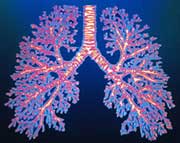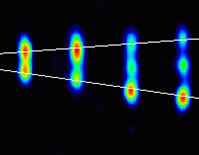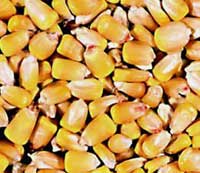Latest News

Radiation zaps bystanders
Radon may pose a greater cancer threat than has been thought.
Radon damage from irradiated cells spreads to their neighbours, a new study finds 1 . The result suggests that small amounts of this radioactive gas could cause widespread harm.
The study “is a reason for concern but not panic”, says Gerhard Randers-Pehrson of Columbia University, New York, a member of the team that performed the study. “We’re talking about the acceptable level of radon changing pe

Study Suggests Predators Are Vital to Health of Ecosystems
The question of which forces control terrestrial ecosystems lies at the heart of a long-standing debate among ecologists. One theory, the so-called bottom-up theory, suggests that plant defense mechanisms exert control by limiting food availability for herbivores. Top-down theorists, however, suggest that predators limit the numbers of herbivores and hence their impact on the vegetation. Now new findings in the current issue of the journal Science that describe animal communities isolated for 15 year

Transgenic Tobacco Detoxifies TNT
For more than 150 years, people around the world have made ample use of the explosive trinitrotoluene, otherwise known as TNT. Its use has had unintended consequences, however: the manufacture, storage and disposal of TNT—which ranks among the most toxic explosives employed by the military—have left large areas of land contaminated and polluted. So far, effective and affordable cleanup technologies have remained out of reach. But new research suggests that help may come from what might seem an unlike

Massive hole makes theories leaky
Surprising black hole weigh-in has astronomers scratching their heads.
Forty thousand light years away, on the other side of the Milky Way, lies object GRS1915+105. It is a giant star and a black hole orbiting one another, blasting out X-rays and ejecting gas and dust at close to the speed of light.
Now measurements of this “extreme and puzzling” object are casting doubt on current theories of how such binary systems form and behave. Astronomers have weighed its black hole,

GM Bacterium Helps Destroy Advanced Tumors in Mice
Generally speaking, we go to great lengths to rid our bodies of foreign bacteria, whether it’s by brushing our teeth, washing our hands or taking antibiotics. But new research suggests that when it comes to treating tumors, we may one day invite the bugs in. According to a study published yesterday in the early online edition of the Proceedings of the National Academy of Sciences, a bacterium that normally resides in soil, dust and dead flesh quickly destroys large tumors in mice when injected along

GM Corn Contaminates Distant Native Plants
In news that will surely fan the flames of the heated debate over genetically modified crops, scientists have found evidence that genes from GM plants can spread far and wide to native ones. According to a report published today in the journal Nature, wild corn from the remote mountains of Oaxaca, Mexico contains transgenic DNA. This, the researchers note, bolsters concerns that such unintentional contamination can threaten the genetic diversity of natural crops.
DNA analyses of the Oaxaca











